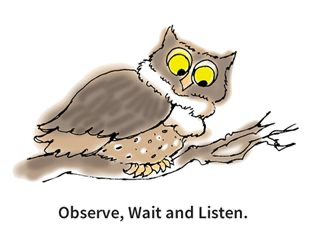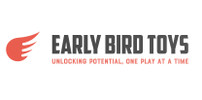
Introduction:
The Hanen Program offers valuable strategies for parents and caregivers to facilitate language development in toddlers, even within the comfort of their own homes. One powerful technique within the Hanen Program is OWL (Observe, Wait, Listen), which encourages caregivers to be attentive to their child's cues and provide language input accordingly. In this blog post, we will explore how to use the OWL technique with a toddler using just a doll and a feeding bottle, focusing on fostering communication and teaching new words.
1. Observe:
Start by observing your toddler's natural behaviors and interests during playtime. Set up a quiet and comfortable space where you can interact with your child without distractions. For this sample activity, you'll need a doll and a feeding bottle.
2. Wait:
Once your toddler is engaged in play, wait for them to initiate interaction with the doll or bottle. This may involve reaching for the doll, attempting to feed it, or making vocalizations.
3. Listen:
As your toddler interacts with the doll and bottle, listen attentively to their vocalizations and gestures. Pay close attention to any attempts at communication, such as babbling or pointing.
Using OWL to Teach New Words:
Now, let's apply the OWL technique to teach your toddler new words using the doll and feeding bottle as props. Here's a sample script:
Parent: (Observing the toddler playing with the doll and bottle)
Parent: (Waiting for the toddler to make a move)
Toddler: (Reaches for the feeding bottle and attempts to put it near the doll's mouth)
Parent: (Listening to the toddler's actions and vocalizations)
Parent: Oh, I see you want to feed the baby! (Modeling the word "feed" while demonstrating the action)
Parent: Yes, we can feed the baby. Here you go, let's feed the baby together. (Encouraging the toddler to imitate the action and word)
Explanation:
By using the OWL technique, we can determine that the toddler is interested and engaged in the activity. This interest indicates that they are more receptive to learning and absorbing new information. When children are actively engaged in an activity they enjoy, their ability to learn and retain new words and concepts is heightened. Therefore, by waiting for the toddler to initiate interaction and responding accordingly, we create an optimal learning environment where the child is motivated to participate and learn.
Conclusion:
By incorporating the OWL technique into home speech therapy sessions, parents and caregivers can effectively support their toddler's language development in a natural and nurturing environment. Through observing, waiting, and listening, caregivers can respond to their child's cues and provide appropriate language input. By using simple props like a doll and feeding bottle, new words can be introduced and reinforced in a fun and interactive way, fostering communication skills and promoting language learning. Additionally, by recognizing and responding to the toddler's interests and engagement, we can enhance their learning experience and facilitate language acquisition.
Resource from Hanen : https://www.hanen.org/images-for-public-site/links---sample-pdfs/itttp17-18s.aspx

